THE ENCYCLOPETIC PALACE / IL PALAZZO ENCICLOPEDICO – CURATED BY MASSIMILIANO GIONI – LA BIENNALE DI VENEZIA
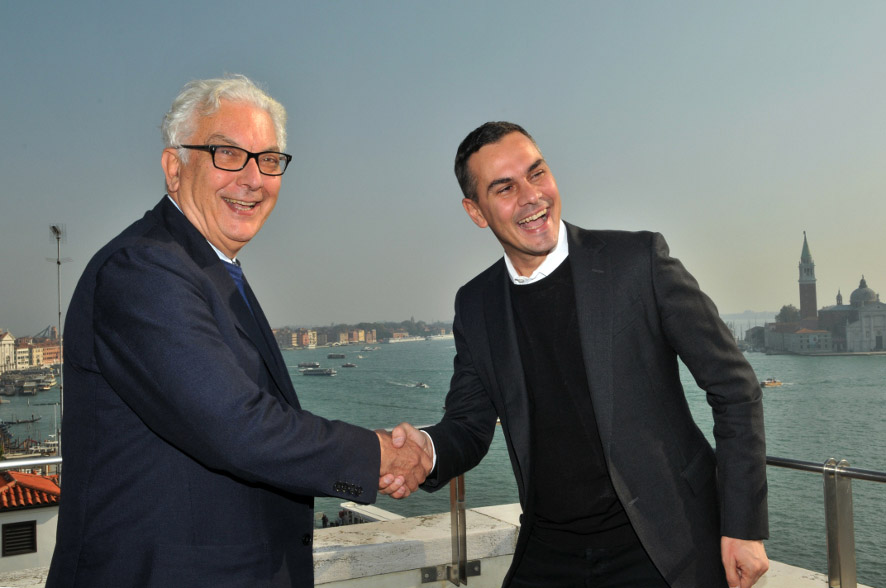
la Biennale di Venezia
55th International Art Exhibition
curated by Massimiliano Gioni
Il Palazzo Enciclopedico / The Encyclopedic Palace
Venice (Giardini e Arsenale), June 1st – November 24th 2013
Preview May 29th, 30th and 31st 2013
Venice, October 25th 2012 – The President of la Biennale di Venezia, Paolo Baratta, accompanied by the Director of the 55th International Art Exhibition, Massimiliano Gioni, met on October, 25th 2012 the representatives of the participating Countries. The Countries participating for the first time are 8: Bahamas, Kingdom of Bahrain, Republic of Kosovo, Kuwait, Maldives, Côte dʹIvoire and Nigeria, Paraguay. The vice-President of the promoting committee for the Holy See’s pavilion at the Biennale Arte 2013 was also present on the occasion.
The 55th International Art Exhibition will take place in Venice from June, 1st to November, 24th 2013 at the Giardini and at the Arsenale (preview: May 29th, 30th and 31st 2013), as well as in various venues the city.
“The Biennale will again use the ʺdualʺ form defined in 1998: a great International Exhibition directed by a curator chosen for this purpose and the National Participations.” In this way Paolo Baratta has introduced the 55th International Art Exhibition, remembering that “the individual national pavilions are a very important feature of the Venice Biennale. It is an old formula and yet one that is more vital than ever. It is precious in times of globalization, because it gives us the primary fabric of reference on which the always new, always varied, autonomous geographies of the artists can be observed and better highlighted. It may be asked to what extent these pavilions also bring with them desires for representation of the country that organises them – although the autonomy left to the curators is broad. Each one has its own history and style. It may certainly be said that in them the countries reveal the role attributed to contemporary art as messenger of their present and their cultural wealth. But the pavilions also provide revelations on more profound realities and riches than those of the usual official and stereotyped images or pretexts.”
The title chosen by Massimiliano Gioni for the 55th International Art Exhibition is:
Il Palazzo Enciclopedico / The Encyclopedic Palace
Massimiliano Gioni introduced the choice of theme evoking the artist self-taught Italian- American Marino Auriti that “on November 16, 1955 filed a design with the US Patent office depicting his Palazzo Enciclopedico (The Encyclopedic Palace), an imaginary museum that was meant to house all worldly knowledge, bringing together the greatest discoveries of the human race, from the wheel to the satellite. Auriti’s plan was never carried out, of course, but the dream of universal, all-embracing knowledge crops up throughout history, as one that eccentrics like Auriti share with many other artists, writers, scientists, and prophets who have tried – often in vain – to fashion an image of the world that will capture its infinite variety and richness. These personal cosmologies, with their delusions of omniscience, shed light on the constant challenge of reconciling the self with the universe, the subjective with the collective, the specific with the general, the individual with the culture of her time.”
“Today, as we grapple with a flood of information, such attempts to structure knowledge into allinclusive systems seem even more necessary and even more desperate – explained Gioni. The 55th International Exhibition of Art will explore these flights of the imagination in a show that—like Auriti’s Encyclopedic Palace—will combine works of contemporary art with historical artefacts and found objects.”
The exhibition will place at its heart “a reflection on the ways in which images have been used to organize knowledge and shape our experience of the world.” Inspired by what scholar Hans Belting has called “an anthropology of images”, the Biennale Arte 2013 curated by Massimiliano Gioni will attempt “an inquiry in the realms of the imaginary and the functions of imagination.
What room is left for internal images – for dreams, hallucinations and visions – in an era besieged by external ones? And what is the point of creating an image of the world when the world itself has become increasingly like an image? How far does the domain of the imaginary extend, when people are still fighting in the name of images?”
“Like the theatres of memory devised in the 16th century by Venetian philosopher Giulio Camillo – mental cathedrals invented to order knowledge through pictures and magical associations – the exhibition “Encyclopedic Palace” will compile – concluded Gioni – a cartography of our imageworld, composing a bestiary of the imagination.”
The 55th International Art Exhibition of la Biennale di Venezia will present, as usual, the National Participations with their own exhibitions in the historic Pavilions of the Giardini, and in the centre of Venice.
This edition will also include selected Collateral Events, proposed by international bodies and institutions, who will present their exhibitions and initiatives in Venice concurrently with the 55th Exhibition.
Press Contacts
Visual Arts Press Office
la Biennale di Venezia
Tel. +39 041 5218 – 846/716 – infoartivisive@labiennale.org – www.labiennale.org
FB: La Biennale di Venezia
@twitter.com/la_Biennale
Biographical notes
Massimiliano Gioni (Busto Arsizio, 1973) is a curator and contemporary art critic.
He is currently Artistic Director of the Nicola Trussardi Foundation in Milan as well as Associate Director and Director of Exhibitions at the New Museum of Contemporary Art in New York.
In 2010 he was the youngest and first European director of the 8th Gwangju Biennale in South Korea. In 2003 he was the curator of the section entitled “La Zona” within the 50th International Art Exhibition of la Biennale di Venezia; In 2004 he co-curated the 5th edition of the travelling biennale Manifesta and in 2006 he organized the 4th Berlin Biennale in collaboration with artist Maurizio Cattelan and curator Ali Subotnic. With Cattelan and Subotnick he founded the magazine Charley and the non-profit space The Wrong Gallery, initially opened in 2002 in New York and later hosted by Tate Modern in London in 2005.
Gioni has curated numerous group exhibitions – among them “Ghosts in the Machine”, “Ostalgia”, and “After Nature” at the New Museum – and solo shows by, among others, Pawel Althamer, Tacita Dean, Urs Fischer, Fischli and Weiss, Paul McCarthy, Pipilotti Rist, Anri Sala, Tino Sehgal, and Paola Pivi.
Editor of Flash Art magazine from 2000 to 2003, Gioni has also regularly contributed to many contemporary art magazines including Artforum, Art Press, Frieze, and Parkett and has published his writings in catalogues and volumes edited by Charta, Mondadori, Phaidon, Les Presses du Reel, and Rizzoli.
Il Palazzo Enciclopedico (The Encyclopedic Palace) – statement di Massimiliano Gioni
On November 16, 1955, self-taught Italian-American artist Marino Auriti filed a design with the US Patent office depicting his Palazzo Enciclopedico (The Encyclopedic Palace), an imaginary museum that was meant to house all worldly knowledge, bringing together the greatest discoveries of the human race, from the wheel to the satellite.
Holed up in his garage out in the middle of the Pennsylvania countryside, Auriti worked on his brainchild for years, constructing the model of a 136-story building that would stand 700 meters tall and take up over 16 blocks in Washington, D.C.
Auriti’s plan was never carried out, of course, but the dream of universal, all-embracing knowledge crops up throughout history, as one that eccentrics like Auriti share with many other artists, writers, scientists, and prophets who have tried—often in vain—to fashion an image of the world that will capture its infinite variety and richness.
These personal cosmologies, with their delusions of omniscience, shed light on the constant challenge of reconciling the self with the universe, the subjective with the collective, the specific with the general, the individual with the culture of her time. Today, as we grapple with a flood of information, such attempts to structure knowledge into all-inclusive systems seem even more necessary and even more desperate. The 55th International Exhibition of Art will explore these flights of the imagination in a show that—like Auriti’s Encyclopedic Palace—will combine works of contemporary art with historical artefacts and found objects.
Examining these private universes and audacious undertakings, the exhibition will place at its heart a reflection on the ways in which images have been used to organize knowledge and shape our experience of the world. Inspired by what scholar Hans Belting has called “an anthropology of images”, the exhibition will attempt an inquiry in the realms of the imaginary and the functions of imagination. What room is left for internal images—for dreams, hallucinations and visions—in an era besieged by external ones? And what is the point of creating an image of the world when the world itself has become increasingly like an image? How far does the domain of the imaginary extend, when people are still fighting in the name of images?
Like the theatres of memory devised in the 16th century by Venetian philosopher Giulio Camillo— mental cathedrals invented to order knowledge through pictures and magical associations—the exhibition “Il Palazzo Enciclopedico” will compile a cartography of our image-world, composing a bestiary of the imagination.
The biennal exhibition model itself is based on the impossible desire to concentrate the infinite worlds of contemporary art in a single place: a task that now seems as dizzyingly absurd as Auriti’s dream of the Palazzo Enciclopedico.
Massimiliano Gioni
.-.-.
la Biennale di Venezia
55. Esposizione Internazionale d’Arte
curata da Massimiliano Gioni
Il Palazzo Enciclopedico
Venezia (Giardini e Arsenale), 1° giugno – 24 novembre 2013
Vernice 29, 30 e 31 maggio 2013
Venezia, 25 ottobre 2012 – Il Presidente della Biennale di Venezia, Paolo Baratta, accompagnato dal Curatore della 55. Esposizione Internazionale d’Arte, Massimiliano Gioni, ha incontrato oggi a Ca’ Giustinian i rappresentanti dei Paesi invitati, dei quali 8 partecipano per la prima volta: Bahamas, Regno del Bahrain, Repubblica del Kosovo, Kuwait, Maldive, Costa d’Avorio e Nigeria (con i Paesi Africani), Paraguay (con IILa). Era inoltre presente all’incontro il vice Presidente del comitato promotore del padiglione della Santa Sede alla Biennale Arte 2013.
La 55. Esposizione Internazionale d’Arte si svolgerà dal 1° giugno al 24 novembre 2013 ai Giardini e all’Arsenale (vernice 29, 30 e 31 maggio 2013), nonché in vari luoghi di Venezia.
“La Biennale dʹArte si ripropone ancora una volta nella forma ʺdualeʺ definita nel 1998: una grande Mostra Internazionale diretta da un curatore scelto a tal fine e le Partecipazioni nazionali.”
Così Paolo Baratta ha introdotto la 55. Esposizione Internazionale d’Arte, ricordando che “i padiglioni dei paesi sono una caratteristica molto importante della Biennale di Venezia. Una formula antica di presenza degli stati eppure viva e vitale più che mai. Preziosa in tempi di globalizzazioni, perché ci dà il tessuto primario di riferimento sul quale possono essere osservate e meglio evidenziate le autonome geografie degli artisti, sempre nuove, sempre varie. Ci si può chiedere in che misura questi Padiglioni portino con sé, per quanto ampia sia l’autonomia lasciata ai curatori, anche desideri di rappresentazione del Paese che li organizza. Ognuno ha la sua storia e il suo stile. Possiamo senz’altro dire che in essi i Paesi rivelano il ruolo attribuito all’arte contemporanea quale messaggera del loro presente e della loro ricchezza culturale. Ma dai Padiglioni vengono anche rivelazioni su realtà e ricchezze più profonde di quelle delle pretese o consuete immagini ufficiali e stereotipate.”
Il titolo scelto da Massimiliano Gioni per la 55. Esposizione Internazionale d’Arte è:
Il Palazzo Enciclopedico
Massimiliano Gioni ha introdotto la scelta del tema evocando l’artista auto-didatta italoamericano Marino Auriti che “il 16 novembre 1955 depositava presso l’ufficio brevetti statunitense i progetti per il suo Palazzo Enciclopedico, un museo immaginario che avrebbe dovuto ospitare tutto il sapere dell’umanità, collezionando le più grandi scoperte del genere umano, dalla ruota al satellite. L’impresa di Auriti rimase naturalmente incompiuta, ma il sogno di una conoscenza universale e totalizzante attraversa la storia dell’arte e dell’umanità e accumuna personaggi eccentrici come Auriti a molti artisti, scrittori, scienziati e profeti visionari che hanno cercato – spesso in vano – di costruire un’immagine del mondo capace di sintetizzarne l’infinita varietà e
ricchezza. Queste cosmologie personali, questi deliri di conoscenza mettono in scena la sfida costante di conciliare il sé con l’universo, il soggettivo con il collettivo, il particolare con il generale, l’individuo con la cultura del suo tempo.”
“Oggi, alle prese con il diluvio dell’informazione, questi tentativi di strutturare la conoscenza in sistemi omnicomprensivi ci appaiono ancora più necessari e ancor più disperati – spiega Gioni.
“La 55. Esposizione Internazionale d’Arte indagherà queste fughe dell’immaginazione in una mostra che – come il Palazzo Enciclopedico di Auriti – combinerà opere d’arte contemporanea e reperti storici, oggetti trovati e artefatti.”
Al centro dell’esposizione sarà “una riflessione sui modi in cui le immagini sono utilizzate per organizzare la conoscenza e per dare forma alla nostra esperienza del mondo.” Ispirandosi a quello che lo studioso Hans Belting ha definito una “antropologia delle immagini”, la Biennale Arte 2013 curata da Massimiliano Gioni avvierà “un’indagine sul dominio dell’immaginario e sulle funzioni dell’immaginazione. Quale spazio è concesso all’immaginazione, al sogno, alle visioni e alle immagini interiori in un’epoca assediata dalle immagini esteriori? E che senso ha cercare di costruire un’immagine del mondo quando il mondo stesso si è fatto immagine? Fino a dove si estende il dominio dell’immaginario, quando ancora si lotta in nome delle immagini?”
“Come nei teatri della memoria progettati nel Cinquecento dal veneziano Giulio Camillo – cattedrali interiori in cui ordinare il sapere in immagini – l’esposizione “Il Palazzo Enciclopedico” cercherà di delineare – conclude Gioni – la cartografia di un’immagine-mondo, componendo un bestiario dell’immaginazione.”
La 55. Esposizione Internazionale d’Arte della Biennale di Venezia presenterà, come di consueto, le Partecipazioni nazionali con proprie mostre negli storici Padiglioni ai Giardini, oltre che nel centro storico di Venezia.
Anche per questa edizione si prevedono selezionati Eventi collaterali, proposti da enti e istituzioni internazionali, che allestiranno le loro mostre e le loro iniziative a Venezia in concomitanza con la 55. Esposizione.
Contatti
Ufficio Stampa Arti Visive
la Biennale di Venezia
Tel. +39 041 5218 – 846/716 – infoartivisive@labiennale.org – www.labiennale.org
FB: La Biennale di Venezia
@twitter.com/la_Biennale
Note biografiche
Massimiliano Gioni (Busto Arsizio, 1973) è curatore e critico di arte contemporanea.
Direttore artistico della Fondazione Nicola Trussardi di Milano, Gioni è Associate Director e Director of Exhibitions del New Museum of Contemporary Art di New York.
Nel 2010 ha diretto la 8. Biennale di Gwangiu essendone il più giovane direttore nonché il primo europeo. Nel 2003 ha curato la mostra “La Zona” per la 50. Esposizione Internazionale d’Arte della Biennale di Venezia; nel 2004 è stato il co-curatore della biennale di arte contemporanea itinerante Manifesta 5 e nel 2006 ha curato la 4. Biennale di Berlino in collaborazione con l’artista Maurizio Cattelan e la curatrice Ali Subotnick. Con Cattelan e Subotnick ha fondato la rivista Charley e lo spazio no profit The Wrong Gallery, inizialmente allestita nel 2002 a New York e ospitata nel 2005 alla Tate Modern di Londra.
Gioni ha curato innumerevoli mostre collettive – tra cui si ricordano “Ghosts in the Machine”, “Ostalgia” e “After Nature” al New Museum – e mostre personali di, tra gli altri, Pawel Althamer, Tacita Dean, Urs Fischer, Fischli e Weiss, Paul McCarthy, Pipilotti Rist, Anri Sala, Tino Sehgal, Paola Pivi.
Caporedattore della rivista Flash Art a New York dal 2000 al 2003, Gioni ha collaborato con importanti riviste d’arte contemporanea tra cui Artforum, Art Press, Frieze, Parkett e pubblicato saggi e cataloghi con Charta, Mondadori, Phaidon, Les Presses du Reel e Rizzoli.
.-.-.-.
Il Palazzo Enciclopedico – Testo di Massimiliano Gioni
Il 16 novembre 1955 l’artista auto-didatta italo-americano Marino Auriti depositava presso l’ufficio brevetti statunitense i progetti per il suo Palazzo Enciclopedico, un museo immaginario che avrebbe dovuto ospitare tutto il sapere dell’umanità, collezionando le più grandi scoperte del genere umano, dalla ruota al satellite.
Rinchiuso in un garage perso nella campagna dello stato della Pennsylvania, Auriti lavorò per anni alla sua creazione, costruendo il modello di un edificio di 136 piani, che avrebbe dovuto raggiungere i 700 metri di altezza e occupare più di 16 isolati della città di Washington.
L’impresa di Auriti rimase naturalmente incompiuta, ma il sogno di una conoscenza universale e totalizzante attraversa la storia dell’arte e dell’umanità e accumuna personaggi eccentrici come Auriti a molti artisti, scrittori, scienziati e profeti visionari che hanno cercato – spesso in vano – di costruire un’immagine del mondo capace di sintetizzarne l’infinita varietà e ricchezza.
Queste cosmologie personali, questi deliri di conoscenza mettono in scena la sfida costante di conciliare il sé con l’universo, il soggettivo con il collettivo, il particolare con il generale, l’individuo con la cultura del suo tempo. Oggi, alle prese con il diluvio dell’informazione, questi tentativi di strutturare la conoscenza in sistemi omnicomprensivi ci appaiono ancora più necessari e ancor più disperati. La 55. Esposizione Internazionale d’Arte indagherà queste fughe dell’immaginazione in una mostra che – come il Palazzo Enciclopedico di Auriti – combinerà opere d’arte contemporanea e reperti storici, oggetti trovati e artefatti.
Al centro dell’esposizione sarà una riflessione sui modi in cui le immagini sono utilizzate per organizzare la conoscenza e per dare forma alla nostra esperienza del mondo. Ispirandosi a quello che lo studioso Hans Belting ha definito una “antropologia delle immagini”, la mostra avvierà un’indagine sul dominio dell’immaginario e sulle funzioni dell’immaginazione. Quale spazio è concesso all’immaginazione, al sogno, alle visioni e alle immagini interiori in un’epoca assediata dalle immagini esteriori? E che senso ha cercare di costruire un’immagine del mondo quando il mondo stesso si è fatto immagine? Fino a dove si estende il dominio dell’immaginario, quando ancora si lotta in nome delle immagini?
Come nei teatri della memoria progettati nel Cinquecento dal veneziano Giulio Camillo – cattedrali interiori in cui ordinare il sapere in immagini – l’esposizione “Il Palazzo Enciclopedico” cercherà di delineare la cartografia di un’immagine-mondo, componendo un bestiario dell’immaginazione.
Il modello stesso delle esposizioni biennali nasce dal desiderio impossibile di concentrare in un unico luogo gli infiniti mondi dell’arte contemporanea: un compito che oggi appare assurdo e inebriante quanto il sogno di Auriti e del suo Palazzo Enciclopedico.
Massimiliano Gioni

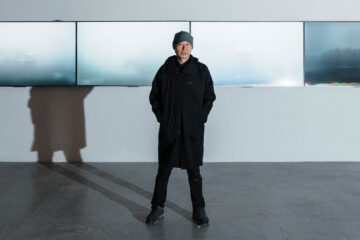
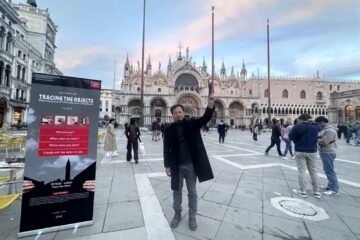
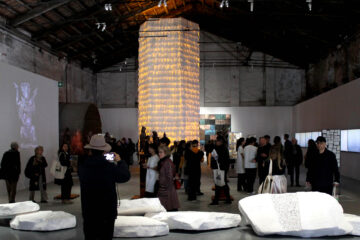
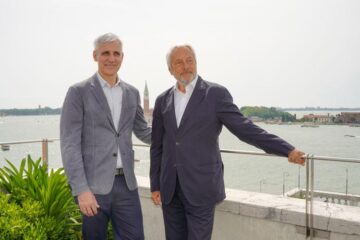

No Comment